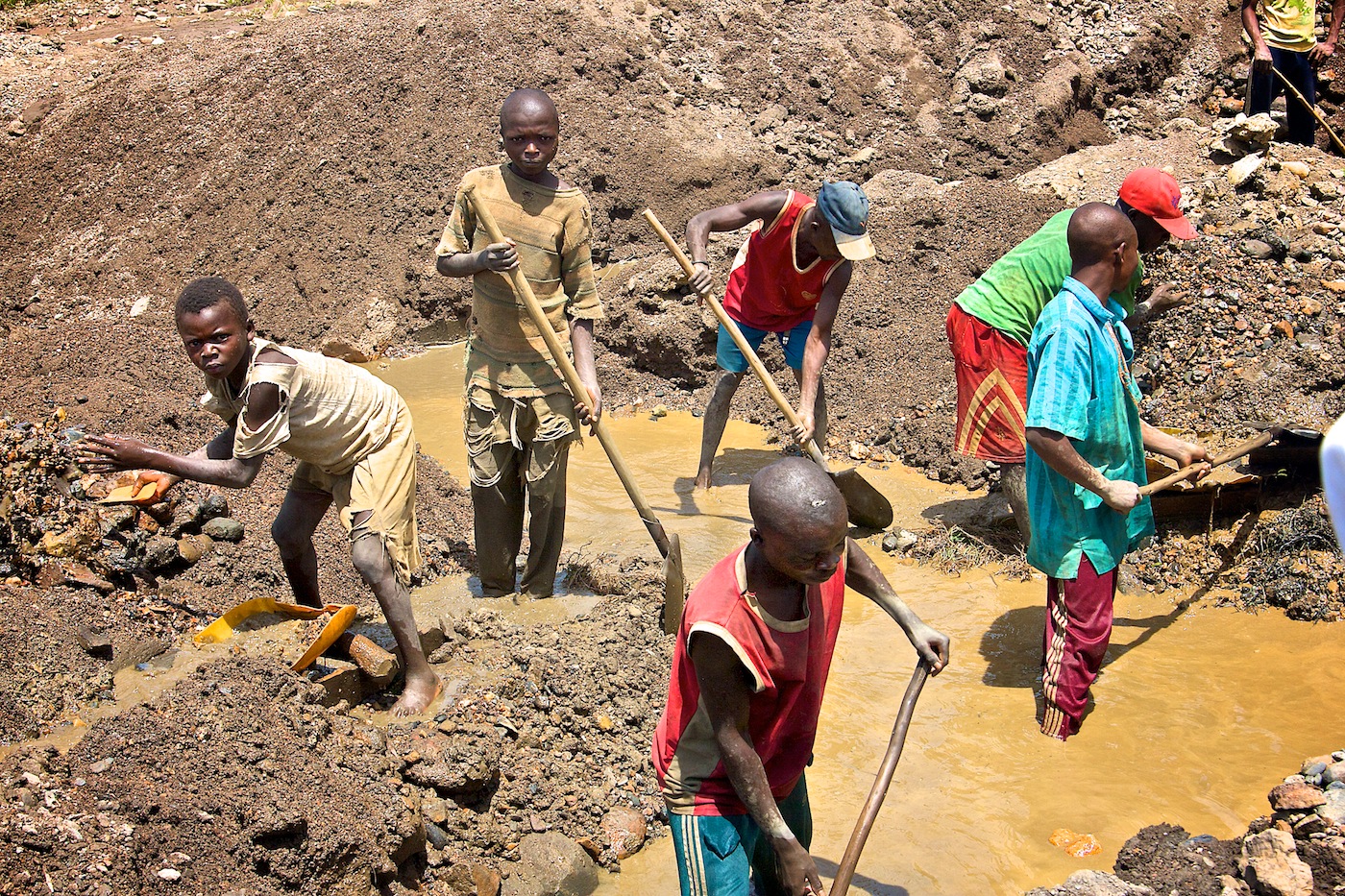Our Distance from Dirt

2012: Children gold mining in the eastern DRC. (Sasha Lezhnev/Enough Project, Flickr, CC BY-NC-ND 2.0)
It seems that every other month, a different segment of the online population awakens to the horrors of unjust extractive labor on the continent and elsewhere in the world. Clips of young children working in fields and toiling in ruthless mines beam up on our coltan-powered iPhones in punchy, bite-sized expository threads that at once arrest and implicate us.
We clutch our unethically sourced pearls and confront these ugly truths of our consumption. Some of us linger on the news, some share and sign petitions and others, in the sort of torpor that fast-paced timelines tend to inspire, scroll on. For a moment, we rage but in time, another shareable injustice snags at our attention and we forget.
It is easy to forget when the mines are far away from our mobile phones. Many on the African continent who can consume these goods that are manufactured from violently extracted materials are, ourselves, distant from the land. This distance is built into our world, encoded in our economies and facilitated by how we consume.
We pluck our food from shelves instead of branches, and source it from supermarkets rather than unearth it from the soil ourselves. We do not bend to wells or rivers, and our hands do not know the weight of hoes hoisted up into the air and hurled onto the soil. This distance is a part of how we live, and has significant implications on how we seek to make the world more equitable.

2012: A gold dealer in the eastern DRC displays samples of gold. (Sasha Lezhnev/Enough Project, Flickr, CC BY-NC-ND 2.0)
…click on the above link to read the rest of the article…